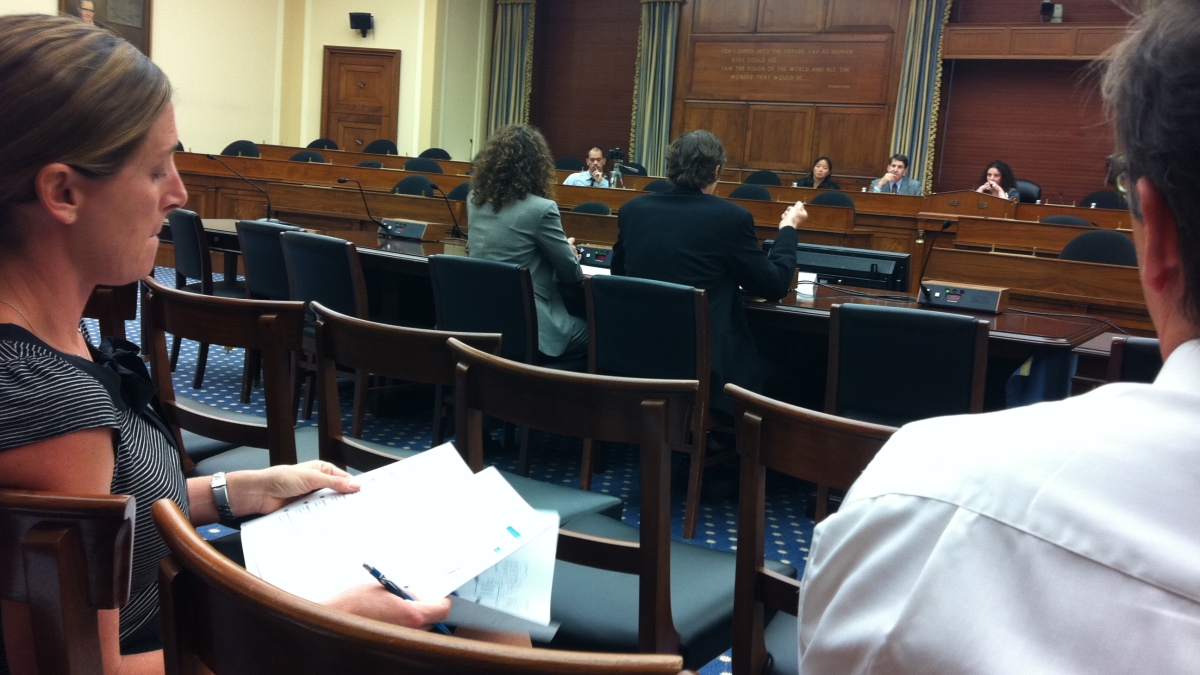Congressional panel ignites scientist's communications training

Jargon is one of the biggest challenges for scientists trying to communicate important scientific information to the public and policy-makers. Getting past those scientific words – often trenchant, detailed, Latin or multisyllabic – can leave audiences gasping for air, and the message lost in translation. This problem, says Arizona State University marine ecologist Leah Gerber, originates at the source – with scientists.
“Academics tend to focus on the publication of papers and the acquisition of grants for funding,” says Gerber. “Improving our ability to communicate with the public can help scientists better shape the future, engage the public and keep scientific messages from being distorted or misunderstood.”
Gerber, an associate professor in the School of Life Sciences in ASU’s College of Liberal Arts and Sciences, is one of 20 scientist-communicators who took part in a two week Aldo Leopold Fellowship program this Fall. The added communications knowledge base offered by the fellowship program enhances participating scientist’s abilities to create an impactful and more effective platform for their research.
“Many scientists simply lack the ability to communicate to large and diverse audiences. It wasn’t part of our training,” says Gerber. The problem is perpetuated, she says, by the lack of a “real reward system” to encourage scientists to invest in communications training that can make science matter outside of the scientific arena.
The distinguished fellowship, administered by the Woods Institute for the Environment at Stanford University, brings in journalists and other media specialists as teachers. The first week offers training in leadership and communication. The second week puts scientists in the hot seat speaking from behind a podium before congressional lawmakers in Washington, D.C.
To prep for their congressional experience, Gerber and the other fellowship members used role-playing to develop better skills for connecting with broader audiences. “You need to know your audience,” Gerber says. “You need to allow individuals without scientific backgrounds to understand ideas that could potentially affect their lives.” Using feedback gained in leadership training boosted Gerber’s ability to understand the importance packaging one’s scientific message for people with different thinking styles.
Would that training prove good enough for political audience? The congressional structure and its political agenda proved to be one of the toughest challenges that Gerber has ever faced.
TheLeopold trainers tasked Gerber and her fellowship partner to either present a challenge or to support a bill in front of a congressional committee. The duo chose to explore the topic of the Endangered Species Act (ESA), as it pertained to a bill introduced by Representative Joe Baca this past March 2011. The Baca bill addresses the definitions of extinction as stated by the act. The bill states that if a species has been listed for 15 years as endangered, with no “significant increase” in the species population, that it should be delisted and declared extinct.
Approaching the podium on the day of her congressional presentation, Gerber says she felt confident: “I’ve studied the Endangered Species Act for years.” Her first step was to give a brief formal statement to introduce herself and present her credentials to the committee. Then, the real issues were put forward.
“The committee immediately refuted every one of our arguments,” Gerber says. “They used any uncertainty I had to their advantage, whether it was in the data or the scientific theory.” There appeared to be very little role for science in the process and most of the politicians’ minds seemed already made up about the issue, she says. “But, my guess is that about 20 percent of politicians actually did listen – and this is where science can enter the decision-making process.”
While Gerber found that some minds were not open to new information, poor communication can make a potentially influential piece of research a lot less compelling, especially in the face of the disconnect between scientists and policymakers.
Gerber says the future of scientific communication must include an intersection of the public, media and policy, and a communication network intent on building bridges with the rest of society. She says that by teaching and renforcing these skills for the future generations, science might play a more significant role in people’s lives. Given the dramatic impacts of humans on the planet, Gerber feels that changing the role and character of communication in science would allow the public make better informed decisions; ones that will hopefully create a brighter future.
So what is Gerber planning to do differently in her future? “Preparing for those tough questions,” she says.
Written by Gabrielle Marshall